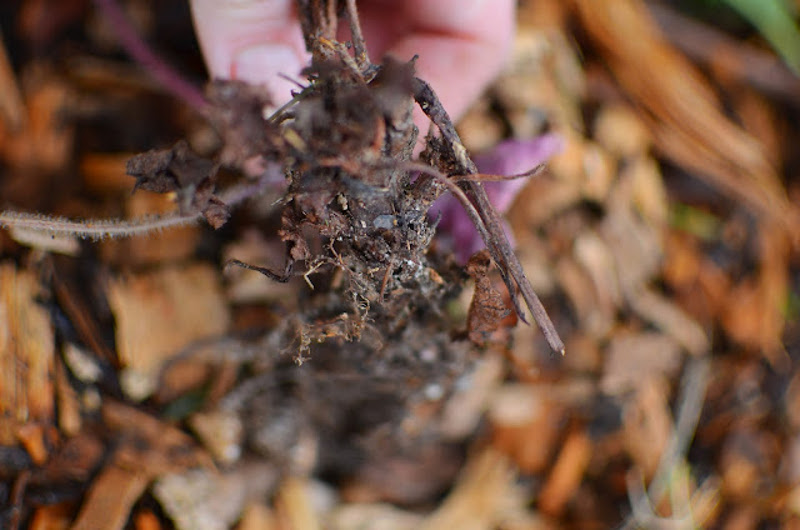Coral bells are a fabulous little plant. In Latin, they are known as Heuchera, but we kind of prefer the common name. Heuchera kind of sounds like you are trying to cough something up. ...or maybe we're just not speaking Latin correctly (but who does really?). Anywho, coral bells are one of those perfect plants that can be used as pepper plants in your garden. Why?

1. They are easy to propagate (multiply) and divide easily.
2. Their foliage stays in tidy little clusters low to the ground, then they send up teeny tiny little flower spikes that top out at around 2' or so.
3. Those flower spikes are see-through plants, so they work with any number of other perennials without blocking them out.
4. Oh and those flower spikes look pretty precious as cut flowers.
5. Those leaves and flowers? They come in a wide variety of colors from deep dark burgundy, to a caramel kind of brown/red, to bright lime green, yellow, red or even typical green. Any garden can incorporate this plant.
6. Plant them in early fall and they will be fine. By next spring, they might even be ready to go under division.
How To Divide Coral Bells
So your coral bells plant is about as big as a small pumpkin and you are ready to divide it. What do you do?
Pull up the entire plant if it is fairly small and lightly pull at the root sections. They will most likely naturally pull apart into little sections like this:

Transplanting Divided Coral Bells Plants
If you have a very large plant, you can hack away at the edges with a shovel and take divisions that way. After taking your divisions, it is simply a matter of replanting those divisions wherever you want them. Do this immediately after dividing the plant so the roots don't dry out and baby the plants for a few weeks by giving them daily showers (or every other day...coral bells are tough!) If you are transplanting in the spring or fall when rain showers are abundant, you might not have to do a thing -- God will take care of the watering.
Best Time To Divide and Transplant Coral Bells
We do not recommend dividing or transplanting in the summer because of the heat and dryness will put additional stress on the plants. Summer is a great time to start planning though! The best time to divide is in the spring after the new growth has emerged, so the plants have all summer and fall to get established. You can also divide and transplant in the fall too, and these tough plants will be fine.
Write down where you need a little color, or a little bit of a deep tone to accent those lime hostas. Write down which coral bells (or hostas, or daylilies or coneflowers) bloomed the most beautifully and maybe even mark them with a ribbon or plant tag. You will forget everything come fall and even more come spring when you are actually ready to divide, so take notes now and get yourself ready!
Also, if you want to divide a plant in fall, you might want to give it a little extra fertilizer and water in the summer to keep it growing. The larger and healthier the plant is, the easier the divisions will be. One caveat -- if you are suffering through a drought, leave the plants alone and don't fertilize. Your plants will cry. It is like taking someone to the gym and giving them 5 caffeine pills, then telling them to run without any water. They will probably pass out and might even die. (The plants...probably not the people, but you understand, yes???)
 |
Author Chris Link - Published 10-17-2021 |
